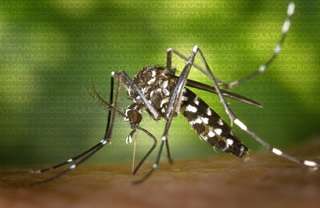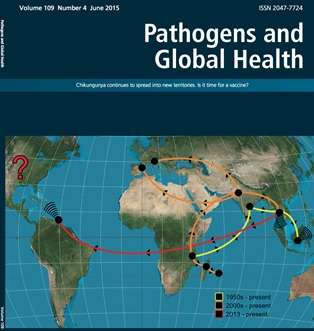New genome sequence to provide insight into tiger mosquito and how deadly diseases are transmitted to humans

Pathogens and Global Health journal has just published details of the first draft genome sequence of Aedes albopictus, commonly known as the tiger mosquito and responsible for transmitting several deadly diseases to humans, such as dengue and chikungunya, potentially offering hope to millions around the world.
"This sequencing… offers great hope to our understanding of the mosquito and our ability to control it, potentially saving millions of lives in many areas of the world," - Professor Andrea Crisanti, Editor-in-Chief of Pathogens and Global Health.
An article revealing a draft genome sequence of the disease-carrying mosquito Aedes albopictus, or tiger mosquito, has been published in the journal Pathogens and Global Health, providing a first look into the genetics of a most dangerous and invasive insect and the possibility of developing ways to prevent the spread of the dengue and chikungunya fevers that infect millions of people annually.
It is all the more urgent now given high levels of mosquito migration and that Aedes albopictus has been moving in recent years from its natural habitats in tropical South East Asia to many parts of the world, including Europe, the United States and Africa. It is estimated that as many as 400 million people are infected by the dengue and chikungunya viruses carried by the mosquito and transmitted to people as it feeds on their blood.
Major global upheavals have undoubtedly contributed to the large-scale spread of Aedes albopictus, and these are believed to include climate change, urbanisation of rural areas and indeed changes in the use of land itself. This has all lead to fears among many populations of a risk of infection from Aedes albopictus.
The sequencing and the analysis were jointly carried out by a number of leading institutions – including Imperial College in the UK, the University of Perugia in Italy and the Institute of Molecular Biology and Biotechnology in in Heraklion, Crete, Greece, along with others in the UK, Italy and the US – and was supported by the European Commission, the executive arm of the European Union.

The project proved enormously challenging, mostly due to the large size of the Aedes albopictus genome compared to other insects that spread diseases to people. Scientists will now be in a better position to identify just how diseases are passed on to humans by Aedes albopictus and devise ways to prevent it.
More information: "A draft genome sequence of an invasive mosquito: an Italian Aedes albopictus." Pathogens and Global Health, Advance Article Tuesday 15th September 2015 www.maneyonline.com/doi/full/1 … 47773215Y.0000000031


















